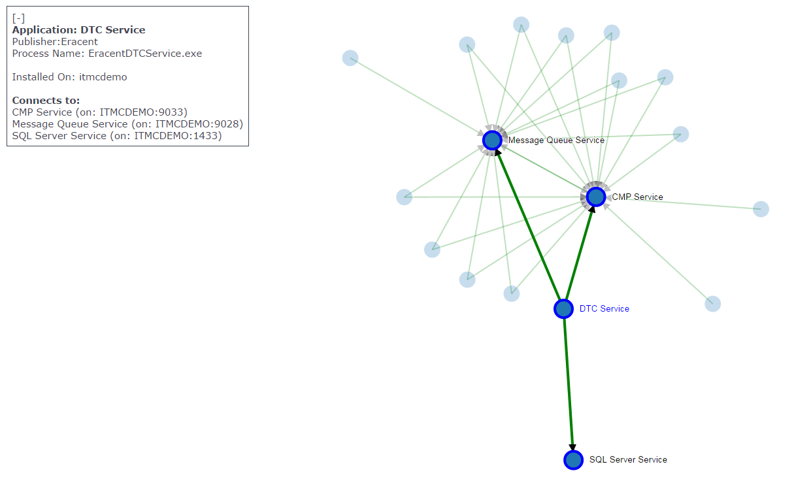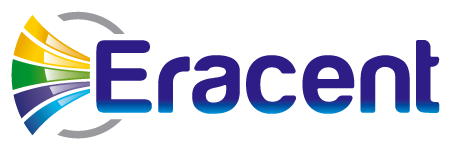Essential Data for IT Operations and IT Service Management
Essential Data for IT Operations and IT Service Management
Thanks to the combination of your CMDB, asset management repository and discovery tools, you have a dynamic snapshot of the hardware and software that is being utilized in your data center and network environments. So why does it seem like you still can’t get easy answers for IT planning and system troubleshooting? Wouldn’t it be helpful to understand the holistic view of the entire enterprise – to be able to see what applications are speaking to others on which port and computer, including the direction of communication? Application Dependency Mapping and Infrastructure Mapping can provide this view.
Knowing your asset inventory is not enough for many operational tasks and processes. To meet deeper requirements, you need to be able to see another layer of detail, which can include:
- Server hardware
- Software applications and versions/patch levels
- How these devices and applications are connected and communicate
- How they work together and impact one another
Eracent provides two approaches for gathering and reporting this level of information.
The first approach is Application Dependency Mapping. As its name implies, it is the process of identifying and documenting dependencies of a software application. Among other things, it detects:
- Machines that are in use as part of a system
- Services that are utilized
- Ports that are being used
- The method and direction of communication between each of these elements

In addition to the Application Dependency Mapping report, the relationship between the elements is also visually depicted in an at-a-glance diagram in the user interface. Application Dependency Mapping functionality is provided natively as part of ITMC Discovery™. Typically, it takes multiple tools to acquire this level of detail, however Eracent’s Application Dependency Mapping will give you a single pane of glass view.
The second approach, Infrastructure Mapping, is performed with the Eracent Network Topographer™ (ENT) and provides a more detailed layer of information. In addition to the information provided by Application Dependency Mapping, the Network Topographer detects and reports on:
- Routers, switches, machines and other physical devices that make up systems and network infrastructure
- Connections and dependencies at the service and physical infrastructure levels
- The operational status of various components

The Network Topographer also provides a visual depiction of each element and the relationships between them. This interface is more dynamic than the one provided for Application Mapping data. With this interface, users can navigate between objects with drag and drop capability, drill down into each component for more details, and click to see the full machine report for each device. Additionally, the Network Topographer supports IT Service Management since it provides CMDB nomenclature for components, and the detailed attributes for each device can be exported to a CMDB.
The Network Topographer includes an Operations Manager interface, which utilizes customer-defined templates for what data should be included and how it appears.
Both forms of detection and mapping – Application Dependency and Infrastructure – utilize a native process within the ITMC toolset. The required discovery can be performed equally well with or without utilizing an agent.
Uses and Benefits
What are the uses and benefits of Application Dependency and Infrastructure Mapping? Here are the key benefits:
- Business Service Mapping – The scan looks at what devices and applications you have and who they are communicating with to provide an understanding of the impact on the business. Data can be shared with the CMDB so that you can generate CI connectivity information. All this applies to both cloud-based and on-premise solutions.
- Troubleshooting – If there is an outage, you can find and fix the problem more expeditiously having the available detail on whether an item is single-threaded or connected and how it is communicating. This level of detail shows which applications, services and users will be impacted in the event of an outage or failure with one element in the system. It also shows what backups and redundancies, if any, are in place to mitigate these potential impacts.
- Cloud Migrations – When migrating to the cloud, you can ensure that all services are moved and nothing is missed. You can facilitate more effective migrations with the clear understanding of interdependencies.
- Consolidate or Retire Assets with Confidence – You can confidently retire or consolidate assets only if you understand their current interdependencies and business impact.
Eracent’s Application Dependency Mapping and Infrastructure Mapping provide multiple levels of visibility into your systems: what assets you have, and more importantly, how they are connected and work together to deliver your organization’s computing power to meet business needs.
Application Dependency and Infrastructure Mapping
- Identifies processes and applications
- Graphical view of communication and dependencies, including ports
- If a system, process or service goes down, what other systems and applications will be affected?
- Two levels of Dependency Mapping: Application and Infrastructure





